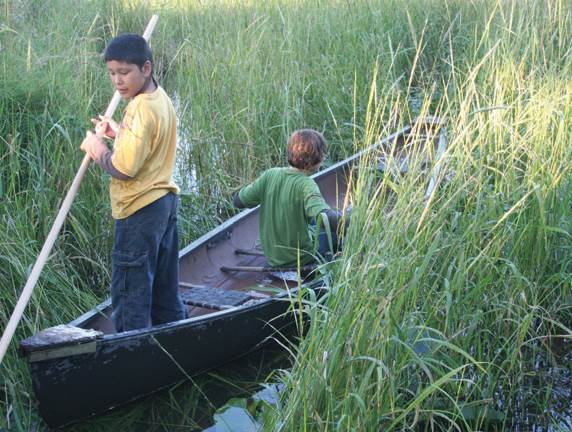About This Project
We will work with the White Earth Nation to understand how land use changes, pollution, and climate change impact the chemistry of the lakes where tribal members harvest Wild Rice. Members will collect and analyze data using easy-to-use sensors and a database we build with their help and input. Wild Rice is food, economic opportunity, and a cultural touchstone; understanding the lakes it grows on will help people protect it.Ask the Scientists
Join The DiscussionWhat is the context of this research?
Each fall, hundreds of Ojibwa families on the White Earth Reservation in northwestern Minnesota harvest up to 1000 lbs. of wild rice per family for food and/or income to support their families. The rice is not just income, though; it is an important part of the history and tradition of the Anishinaabe people. As the climate changes in the region and land use changes, knowing more about the rice and the conditions in which it grows will allow White Earth to adapt to changing climate and fight for sustainable agricultural practices that will enable them to continue to work with the land to support their families and their culture.
What is the significance of this project?
Wild rice (Zizania palustris L.) is of tremendous cultural and economic importance to the Anishinaabe Peoples of the Great Lakes Region. Each fall hundreds of families on the White Earth Reservation in northwestern Minnesota harvest up to 1000 lbs. of wild rice per family for food and/or income. In addition, the White Earth Natural Resources Department (WENRD) harvests many thousands of pounds of rice for sale to support tribal natural resource management activities. Increasing demand on water resources, coupled with periodic extreme droughts and changing climatic conditions, threaten the sustainability of this important cultural and economic resource.
What are the goals of the project?
- Work with the White Earth (WE) nation to monitor and test water quality as it impacts rice production;
- Build a user-friendly interactive archive for water quality and environmental data;
- Enhance WETCC Students and Tribal Professionals ability to use that database as part of education, research, and tribal planning; and,
- Engage and inform the WE community at every step.
Budget
White Earth Department of Natural Resources is only able to monitor 15 lakes annually, out of over 300 square miles of lakes and rivers. This project will allow White Earth residents to monitor the rest of those lakes and rivers.
It is important that the measurements are taken by people who know and care about the area and that the data is community owned. Community meetings will ensure community partnership in all stages of the project. New low-cost sensors mean that even people who are not professional scientists can collect good quality data needed to make decisions and protect wild rice. We also need money to build a friendly, easy-to-use, easy-to-maintain data base. Supporting a student is a good way to get work done and help advance education. Travel is essential because face-to-face interaction builds trust.
Stretch goals include curriculum materials for students and tools to help community members analyze the data.
Meet the Team
Team Bio
I do the work I do because it is important and it needs to be done. White Earth is facing real issues because of climate and environmental changes – all of this has an impact on food security and sustainability. Sustainability and security, for White Earth and all the people (my brothers and sisters) on Turtle Island is about more than enduring, it’s about thriving. For me it’s personal, and I feel privileged to bring my science into these important conversations.Thriving Earth Exchange
Powered by The American Geophysical Union
Lab Notes
Nothing posted yet.
Additional Information

White Earth Reservation is located in Becker, Clearwater, and Mahnomen counties in north-central Minnesota. Created in 1867 by a treaty between the United States and the Mississippi Band of Chippewa Indians, it is one of seven Chippewa reservations in Minnesota. Although the White Earth Chippewa no longer live as their ancestors did, they have kept alive their tribal heritage. Almost every aspect of their present-day life has been strongly influenced by the past. (From: White Earth Nation)

Project Backers
- 10Backers
- 7%Funded
- $420Total Donations
- $42.00Average Donation

